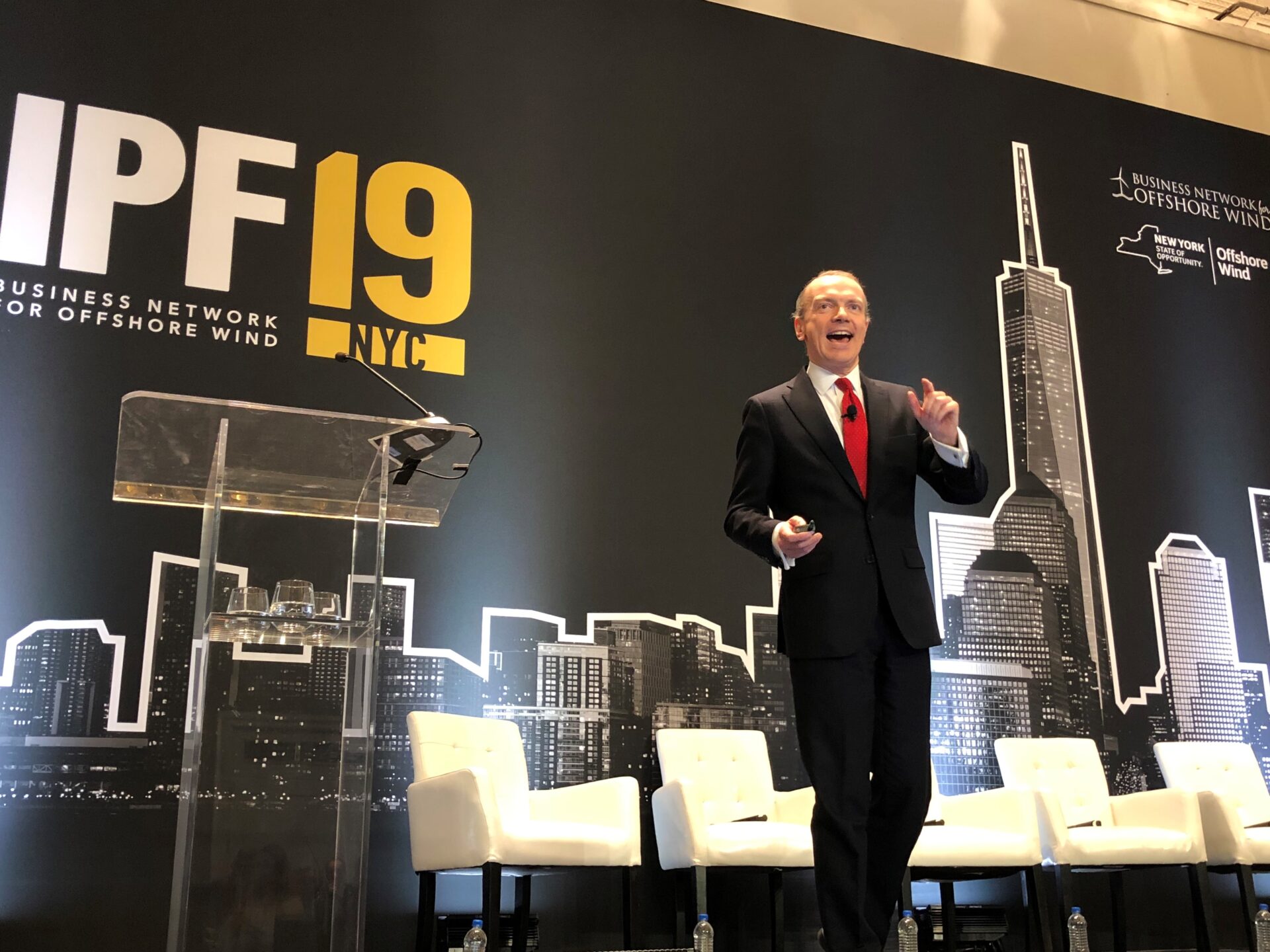News
European offshore wind: the story behind the success

9 April 2019
On Tuesday, WindEurope CEO Giles Dickson gave a keynote speech at the leading US offshore event, the International Offshore Wind Patterning Forum (IPF 2019) in New York. He set out the lessons learned from the EU’s offshore success story.
In particular he urged US States to resist the temptation to impose local content rules. He stressed the importance of cooperation and coordinating their activity on offshore wind like European countries are trying to and encouraged US States to provide visibility on the volumes they want to develop and the timetable for their auctions.
Dickson set out the current state of offshore in Europe. There are now 189 GW of wind energy in Europe, making up 14% of the EU’s power demand. 18.5 GW of this is in Europe’s offshore fleet, whose 105 wind farms and 4,500 turbines now provide 40,000 jobs.
This is set to grow. Offshore wind has a proven record of rejuvenating former industrial towns in Europe. Dickson gave the UK example of the Green Port in Hull, where offshore wind has brought €400m in investment and directly created 1,000 new jobs while providing a wide range of social initiatives to the local community.
And the European offshore success story keeps improving: offshore turbines are getting larger, their capacity factor has increased, while both CAPEX and auction prices continue to fall, which means more countries such as Poland are now embracing offshore wind.
Here Dickson stressed the importance of cooperation to enable the rapid growth of offshore wind. He pointed to the example of the North Seas Energy Cooperation. This initiative aims to establish offshore grid linking the ten countries in the North Seas region (Belgium, Denmark, France, Germany, Ireland, Luxembourg, the Netherlands, Norway, Sweden and the United Kingdom). The North Seas Energy Cooperation is facilitating the cost-effective deployment of offshore wind while promoting interconnection between the countries in the region. This is exactly the sort of cooperation that will be required between States in the US to unlock the country’s vast offshore wind potential.
Dickson also discussed the role of local content. By its very nature, offshore wind tends to be fairly local: blades and other materials tend to be made close to the market. This usually brings a degree of specialisation: for example, Poland makes most of the foundations and cranes even though they don’t have any offshore wind farms yet, while Spain makes lots of towers.
But the key point is this level of localisation and specialisation has developed in a bottom-up – driven by the market. Only one country has tried to impose local content, top-down: France. And they have the highest costs and still haven’t completed their first offshore wind farm. “We know the politics around jobs,” Dickson said. “And the temptation to impose local content. But the European experience shows that if you want both local jobs and low costs, it’s best to let the market work.”
Dickson discussed shared opportunities for both the US and Europe in floating wind: over 50% of both the EU’s and the US’s offshore wind potential lies in deeper waters. While the EU has always been the world’s floating wind energy hub, floating is now ready for commercial roll-out. Its potential in the US is significant.
Finally, Dickson stressed the importance of a ‘happy coexistence’ between offshore wind and other users of the sea: “Offshore wind only works if there’s happy coexistence with fishing, shipping, military interests and biodiversity interests.”
Europe’s leading offshore wind event, WindEurope Offshore 2019, will take place in Copenhagen on 26-28 November – and exhibition space is selling out fast.

